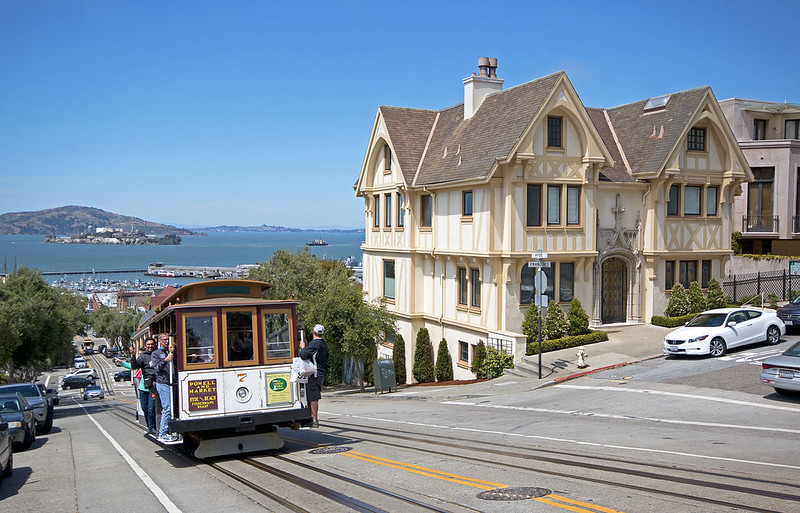By Justin Franz
SAN FRANCISCO — They are as much a symbol of San Francisco as the Golden Gate Bridge, an Irish coffee at the Buena Vista or sourdough bread, but for now the Bay Area’s iconic cable cars are parked. The San Francisco Chronicle reports that officials with the San Francisco Municipal Transportation Agency have decided that they will not operate the city’s three cable car lines until there is an effective coronavirus vaccine.
“The cable cars require the operator to have the most direct interaction with passengers, and we have no way to protect our operators on cable cars,” said Jeffrey Tumlin, MUNI’s director of transportation.
The cable cars (and city’s equally iconic streetcars) were first taken out-of-service in mid-March when a shelter-in-place order was given in the city. MUNI has replaced much of its light rail service with buses and is offering skeleton service while many people still work from home. MUNI officials have recently said that some services may not come back unless new funding sources are identified.
The cable cars have been a presence in San Francisco since the 1870s and this isn’t the first time the fleet has been parked. Many cable car lines were destroyed during the 1906 earthquake, which brought about a wave of electric streetcar lines. In the 1940s, civic leaders tried to scrap the system for good, but a grassroots effort saved them. In the early 1980s, the surviving three lines — California Street, Powell-Mason, and Powell-Hyde — were completely rebuilt. It is the world’s last manually operated cable car system.



